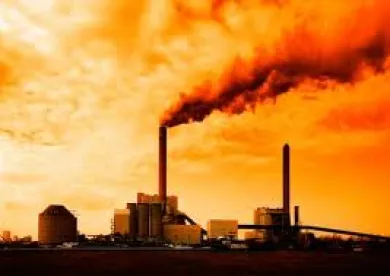On April 20, 2015, EPA revised AP-42 emission factors for equipment found in refineries, chemical plants, and miscellaneous sources, substantially increasing the estimated emissions produced by equipment from these industry categories. The emission factors, which were last updated in 1991, were revised as a result of litigation brought by environmental groups that asserted that EPA had failed to update the factors every three years under the Clean Air Act. The litigation culminated in a consent decree between EPA and the groups in 2014 that obligated EPA to review the emission factors by August 19, 2014. Following timely issuance of proposed revisions and a public comment period, EPA has now issued its final revisions.
In general, AP-42 emission factors are used by regulated entities and State permitting agencies to estimate and report emissions from the equipment and processes that fall into various industrial source categories, as well as a wide range of other regulatory tasks such as designing regulations and control strategies, establishing emission limits and other permit requirements, setting enforcement priorities; and evaluating compliance with air quality standards. However, EPA has stated that “[u]se of these factors [for] emission regulation compliance determinations is not recommended … Because emission factors essentially represent an average of a range of emission rates, approximately half of the subject sources will have emission rates greater than the emission factor and the other half will have emission rates less than the factor. As such, a permit limit using an AP-42 emission factor would result in half of the sources being in noncompliance.” In this instance, the new factors are incorporated into the AP-42 chapters governing petroleum refining, the inorganic chemical industry, and miscellaneous sources. Notably, the new emission factors do not apply to the oil and gas development sector.
Within the source categories, EPA’s primarily focused on flares at these facilities and declining to set new emission factors for liquid storage tanks or wastewater systems, finding that available emissions data was currently inadequate for the latter sources. The Agency also revised emission factors for sulfur recovery units, catalytic reforming units and hydrogen plants. Flaring involves the burning off and destruction of waste gases from facility operations, which EPA has sanctioned as an effective means of pollution control when performed properly. The new emission factors estimate that the volatile organic compounds (VOCs) emitted by flares are four times higher than previous emissions estimates during proper operation.
EPA’s regulations for proper operation of flares is set forth in certain general provisions in the New Source Performance Standards in § 60.18 and National Emission Standards for Hazardous Air Pollutants in § 63.11, which require flares to be:
-
Designed and operated with no visible emissions using EPA Method 22 (except for periods not to exceed 5 minutes in 2 hours);
-
Operated with a flame present at all times, confirmed by the use of a thermocouple or equivalent device;
-
Used only when the net heating value of the gas to be combusted is 300 BTU per standard cubic foot (BTU/scf) or greater (if the flare is steam- or air-assisted), or 200 BTU/scf or greater (if the flare is nonassisted); and
-
Designed for and operated with an exit velocity less than 60 feet per second (ft/sec). An exit velocity of greater than 60 ft/sec but less than 400 ft/sec may be used if the net heating value of the gas being combusted is sufficiently high.
Section 60.11(d) and 63.6(e) also require that flares be operated and maintained consistent with “good air pollution control practices” for minimizing emissions—a term not defined with any specificity in the regulations. However, EPA interprets this to mean 98% destruction efficiency based on studies that suggested this efficiency can be achieved when the above requirements are met.
EPA has focused greater attention on flaring in recent years. In the early 2000’s, EPA began taking a closer look at the impacts of acid gas flaring, issuing an enforcement alert concluding that routine, excessive flaring can produce high SO2 concentrations and may violate the Clean Air Act as not being considered “good air pollution control practices.” Later in August 2012, EPA broadened the scope even further and declared reduction of hazardous air pollutants from flaring a national enforcement initiative.
Consequently, EPA has gone after petroleum manufacturers obtaining roughly a dozen consent decrees that have imposed six or seven-figure civil penalties and significantly greater costs in terms of injunctive relief. These consent decrees have mandated flare minimization and caps on the amount of flaring that may be performed, improvements to flare efficiency including a mandate to meet 98% combustion efficiency, and multi-million dollar capital expenditures through installation of flare gas recovery systems and other equipment.
By significantly increasing the emissions estimates for pollutants emitted by flares, the new emission factors coincide with EPA’s enforcement initiative and continue the drive towards tighter regulation of flaring at petroleum refineries and other industrial operations. New federal refinery regulations will be released later this year that will further address flaring at these facilities. Companies with flaring operations should continue to monitor these developments closely and consult with legal and technical experts to assess how these regulatory changes will impact operations and regulatory obligations.




 />i
/>i

